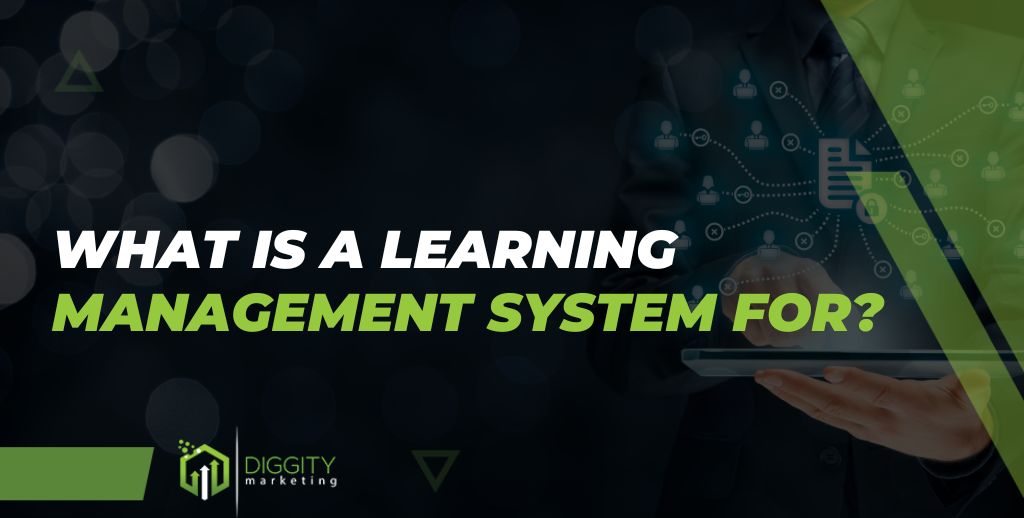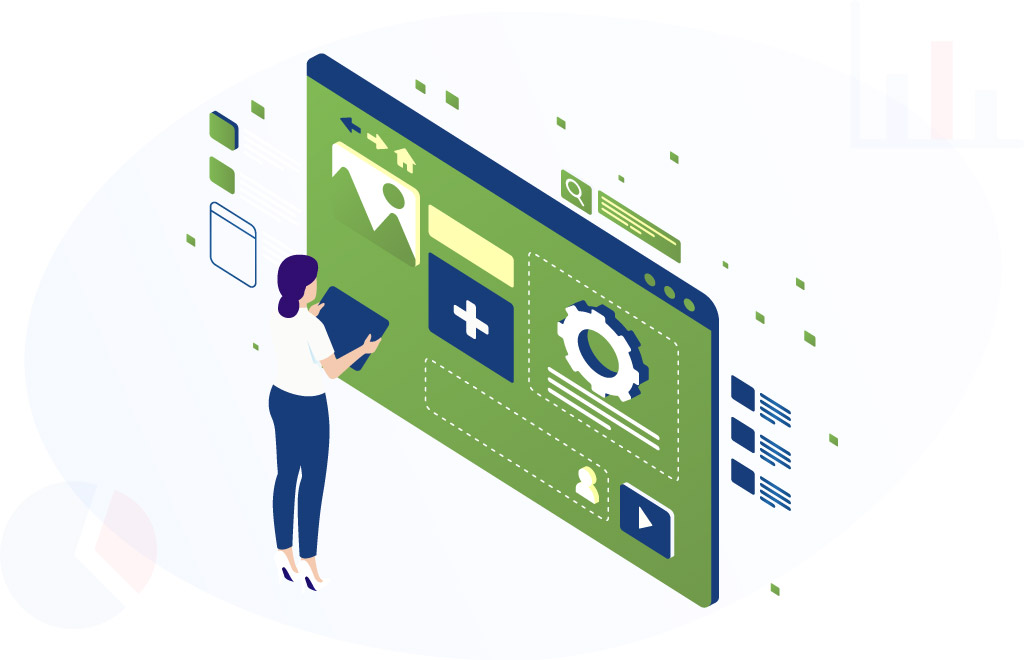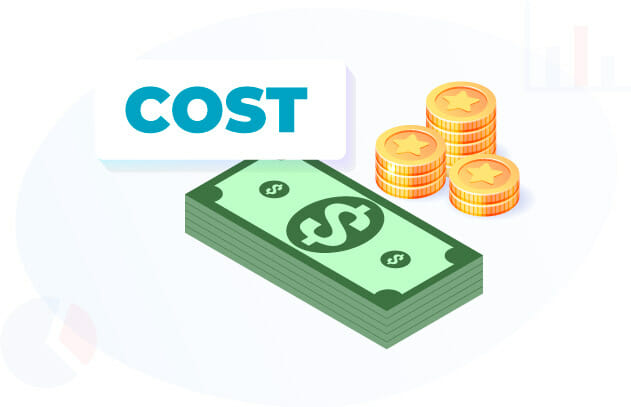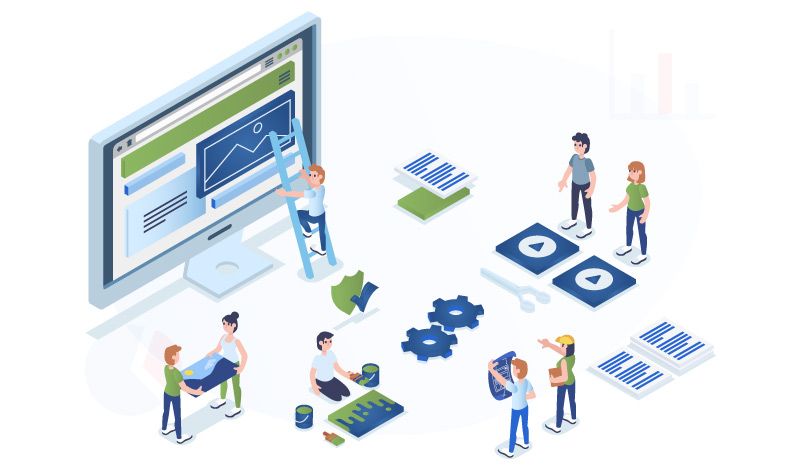
LMS software allows businesses and educational institutions to create and manage lessons, quizzes, courses, and other training materials. A learning management system helps businesses to deliver training programs to workers efficiently. Companies often use a learning management system (LMS) to improve traditional education methods and save time and money.
In this article, we will discuss what learning management systems are, how they work, their benefits, and more.
Table Of Contents
- Quick Summary
- What Is A Learning Management System?
- What Are The Benefits Of LMS?
- Essential Parts Of Learning Management System
- Enterprise Learning Management Software Features
- SCORM And LMS
- What Are Sharable Content Objects?
- Is LMS Worth The Price?
- LMS Promotes Collaboration And Engagement
- Reducing Training Costs Through Learning Management System
- FAQs
- Start Benefiting From Learning Management System Today
Quick Summary
Learning management systems (LMS) are software that provide the framework for online learning. Businesses use LMS software for employee training and educational courses.
The benefits of learning management systems include information sharing, storage, cost savings, and more.
The best learning management systems should include course management, document management, course calendars, social features, and more.
Enterprise learning systems can include enhanced security, scalability, integration, gamification, and more.
What Is A Learning Management System?
The learning management system (LMS) is software that provides a framework to handle all aspects of online learning, including delivering and tracking the training process [1].

A business uses LMS software for employee training to prepare the team for a product launch or learning materials about new processes. A company can use the course builder for course creation to create learning materials with slides, flashcards, quizzes, certifications, and more. Users can log into their LMS software accounts to access the content when the course is ready to launch.
After finishing the course, the employee can complete quizzes and tests and earn a certification. Learning and development programs through a learning management system (LMS) are a low-cost method to maintain learning materials for a large number of people in several locations.
What Are The Benefits Of LMS?
There are several benefits of LMS, including [2]:
Information Sharing: LMS supports the development of knowledge through educational courses for employees.
Storage: LMS also gives a business the ability to create courses, store courses, manage courses, and edit. Several people can work on the content, and information can be updated over time.
Cost Savings: Traditional training can directly impact the cost savings of a business. With LMS elearning courses, users can access courses from anywhere at any time without having to impact company resources
Essential Parts Of Learning Management System
With hundreds of LMS to choose from, there are lots of variable features; however, there are some essential parts of every successful learning management system, including [3]:
E-learning Standards Compliance: Businesses should be able to exchange data without elearning software through compliance with elearning standards.
Multichannel Access: Employees should be able to access their mobile learning through desktops, smartphones, or tablets. Ideally, an LMS learning environment should be browser-based for easy access.
Course Management: Businesses should be able to create courses using a built-in course builder. Businesses should also be able to convert existing slides or text documents into training program material.
Document Management: The ability for students or businesses to upload and manage documents for student learning. This can include course materials, documents, and more.
Course Calendars: Course calendars support the creation of course schedules, deadlines, and more. The calendars help employees to track their student learning progress throughout the course.
Social Features: Social features such as discussion forums, notifications, and messaging promote student learning and engagement in knowledge sharing. Social features allow you to increase learner engagement and improve course completion.
Tracking And Reporting: The system should include detailed reports for remote learning test scores. Businesses should be able to generate detailed information about the overall performance of the learner. Users should also be able to track learner progress and professional development.
Assessment And Certification: Pre-course assessments that assess employee knowledge levels should be available. Digital or physical certification should also be an option.
Invest in your professional development and team up with coworkers who have different strengths.
– Melissa Milloway, Learning Experience Designer, Melslearninglab.com
Enterprise Learning Management Software Features
An enterprise learning management system offers additional features that make them more applicable for compliance training with corporate staff.

Enterprise-specific features can include:
Enhanced Security: Many corporate learning management software solutions have single-sign-on, two-factor authentication, firewalls, and regular data backups for improved data security.
Scalability: Enterprise LMS services are often cloud-based, making them more accessible and faster to scale compared to on-premise learning management systems.
White Labeling: The business can often brand the LMS to make it appear as in-house software.
Multilingual Support: Corporate LMS platforms offer multilingual support on their user interfaces. This is useful for large companies that need to deliver course material to users in multiple locations.
ILT Classrooms: Instructor-led training enables learners to attend live-streamed or recorded content from a business, individually or in groups.
Personalization: The learning content management system should offer personalized learning paths which can be delivered to specific groups based on their roles, knowledge, or experience.
Integration: An enterprise LMS can integrate with other eLearning software, communication platforms, and CRM systems to provide fluid learner progress.
Gamification: With gamified courses, employees can earn points, badges, or digital rewards for completing courses or taking quizzes.
ECommerce: Many enterprise learning management systems offer eCommerce features so that businesses can sell their training systems to a third party.
API: Some enterprise platform features can be extended with custom plugins. They may offer integration with third-party APIs for data sharing.
SCORM And LMS
SCORM, or a sharable content object reference model, is a set of standards that sets how learning content is structured. SCORM training content is designed to function well when used on an LMS.
What Are Sharable Content Objects?
Sharable content objects are learning materials. An SCO can be as small as a single quote or flash card or an entire training unit. Each SCO can have its own entry and score attached to it. SCORM training units can be produced for one platform and shared across multiple platforms.

Is LMS Worth The Price?
Enterprise-level learning management systems can be a significant investment. It is typically easy to sell business leadership by investing in training and development. Over the last five years, several large companies have saved money by using an LMS for their training materials.
Using an LMS doesn’t just reduce training costs but also the length of time needed for training and allows employees to learn when they want. This can reduce money spent on ongoing customer training through travel costs.
LMS Promotes Collaboration And Engagement
A good LMS can encourage your employees to engage with the content. They facilitate chat between employees and drive engagement. The social element of the LMS helps employees to communicate more effectively with the digital platform.

Reducing Training Costs Through Learning Management System
If your business is considering using an LMS learning platform, there are several things to consider [4]:
- Consider What Courses Need Face-to-Face Delivery – Not all training is suitable for online training. Some training courses work best with face-to-face delivery. Go through your training courses, consider which ones require hands-on interaction, and consider employee feedback.
- Change Courses To Adapt to Online Learning – Work with existing trainers to determine if specific existing modules can be altered for online learning. Some courses will always need to stay face-to-face with an instructor that has technical expertise on the subject. However, e-learning also offers video options, interactive content, text, and audio content, and more to adapt courses to online learning.
- Use Live Training Online To Reduce Travel Costs – Live online training can reduce travel costs and make learning materials available to remote workers. An LMS with ILT functionality can deliver training to people worldwide for professional development. These systems allow you to maintain learning materials and provide a training platform online for anyone to access.
We need to bring learning to employees instead of trying to bring people to learning.
– Elliott Masie, Educational Technology Expert, Masie Productions - Use eLearning For On-Demand Modules – Continuing employees’ professional development can be an issue in software and technology companies as well as other industries. Training budgets can often struggle to keep up with the demand for re-certification and keeping employee development up to date.
On-demand training is also cost-effective and can empower employees to use training material and learning objects for learning on their schedule.
FAQs
What Is the Main Difference Between a CMS and Lms?
LMS is a learning management system, and CMS is a content management system. An LMS is designed to host, manage and deliver online learning, while a CMS is a generic platform for online content.
Can You Create a Lms on Your Own?
Yes, a custom LMS can be created with your specific business needs in mind. There are many benefits to this type of system, including control of your content.
How Much Money Does It Cost to Create an Lms?
A custom LMS can cost between $4,000 and $40,000 to create. It depends on the features you need, which is why LMS software is a more cost-effective option [5].

How Do Learning Management Systems Make Money?
Learning management systems make money through shared revenue. Shared revenue can include your LMS vendor being paid a percentage of sales, or you pay the software per user.
What Is the Most Significant Feature of Lms?
Skills and certification tracking is one of the most significant features to impact business for nearly every user. It’s nice to train your employees, but if you aren’t tracking skills development, you won’t be able to measure performance.
How Many Learning Management System Platforms Are There?
There are over 800 different LMS platforms out there with various features [6].
Is Learning Management Software Easy to Use?
Learning management software is very simple to use and has all the features your business needs to set up online courses with a drag-and-drop user interface and more.

Who Needs a Learning Management System?
Learning management systems are used by instructors, learners, higher education institutions, and more.
What LMS Features Do You Need For A Good LMS?
The features needed for a good LMS are options to configure, accessibility, display settings, and methods to suit a wide variety of courses and learning styles.
What Are the Two Main Functions of Lms?
The two main functions of an LMS include facilitating training and reducing the costs of training for a business.
What Is the Main Difference Between LMS and Learning Platforms?
LMS software allows users to create, design and deliver course content through a website or app. Learning platforms are web-based applications that will enable users to develop online courses and share them with employees or learners.
How Effective Is Learning Management Software?
The use of learning management software is more effective in supporting learning and gives educators the ability to monitor the progress of everyone through the system.

What Are the Two Types of Lms?
The two types of LMS are hosted LMS and SaaS LMS. The difference between these two is the maintenance of infrastructure. With hosted LMS solutions, you are responsible for hosting the LMS yourself.
Start Benefiting From Learning Management System Today
If you want to use a learning management system to create courses to train employees, the investment in LMS software will pay for itself. Learning and growing employees are likely to stay loyal to the company. Compared to face-to-face training, quality courses can save you time and company resources. It can save you money on travel costs and speed up the training process overall.
Partnering with the right learning management system can benefit your business and employees, including security, multilingual support, course management, document management, course calendars, and more.
A learning management system can make employee training more convenient and less expensive for your business. Additionally, we have made a list of best online course platforms that could inspire you with new possibilities.
References:
- https://www.forbes.com/advisor/business/best-learning-management-systems/
- https://synergy-learning.com/blog/7-top-benefits-of-using-a-learning-management-system-lms/
- https://www.linkedin.com/pulse/components-modern-learning-management-system-john-cooper
- https://simplelearning.com/blog/how-an-lms-can-help-reduce-your-training-costs/
- https://blog.commlabindia.com/elearning-design/elearning-course-development-cost-factors
- https://www.learnworlds.com/best-learning-management-systems/
